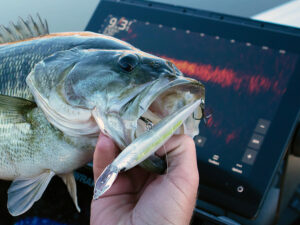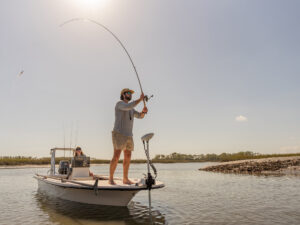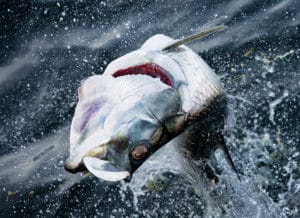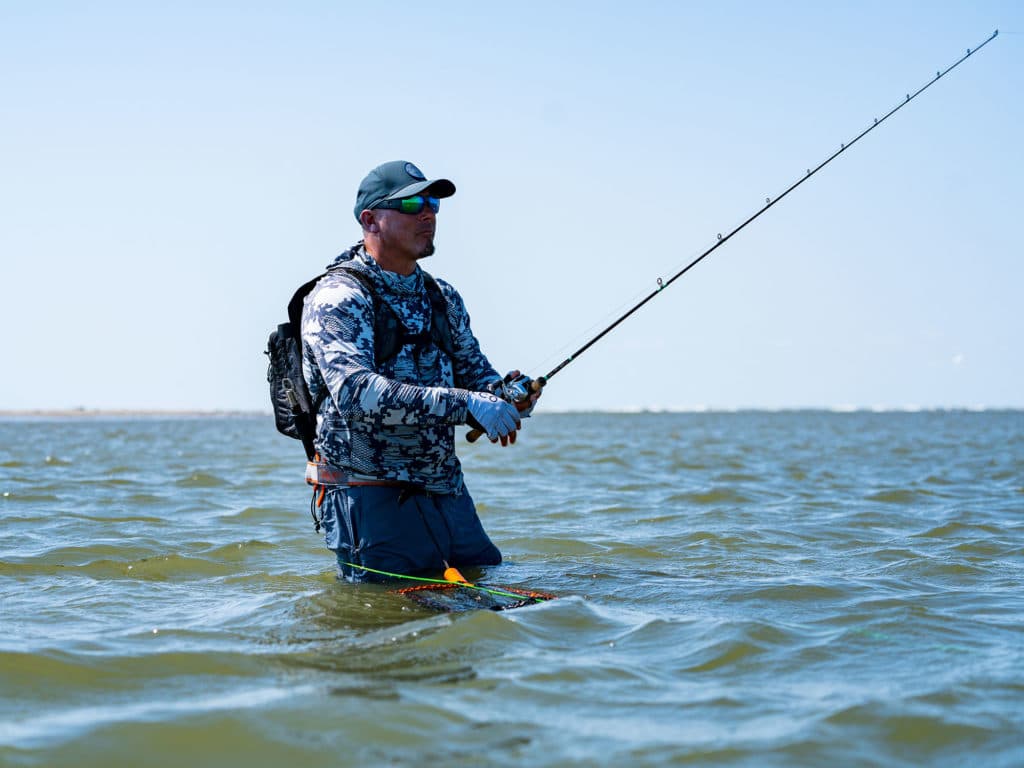
I remember the moment I made the transition. After years of slinging a spinning reel for striped bass, speckled trout and redfish, the first time I used a baitcasting reel for saltwater, I switched allegiance and never looked back.
A baitcasting reel is smaller, lighter, faster and more powerful. But, the precision reels are susceptible to corrosion.
To overcome these challenges, the latest generation of saltwater baitcasting reels are built tough. Reinforced construction, corrosion resistant components and increased line capacity make saltwater baitcasting reels small and strong.
The best way to see this technology is looking at the best saltwater baitcasting reels.
Offshore fishing is the ultimate test of a saltwater baitcasting reel. Captain Ben Florentino of Coastal Charters uses his baitcaster against California’s feisty calico bass and big bluefin tuna.
“The last few years, we’ve had great bluefin tuna fishing,” Florentino says. He targets bluefin with topwater lures. “We look for fish foaming on the surface and cast a popper into the mix,” he says.
The key to success is accurately landing a long cast. “If you go in there too hot, you will push down the fish,” he warns. To launch his lure maximum distance, Florentino uses a nine-foot rod and a Shimano Tranx 400, 500 or PG spooled with 80-pound-test PowerPro.
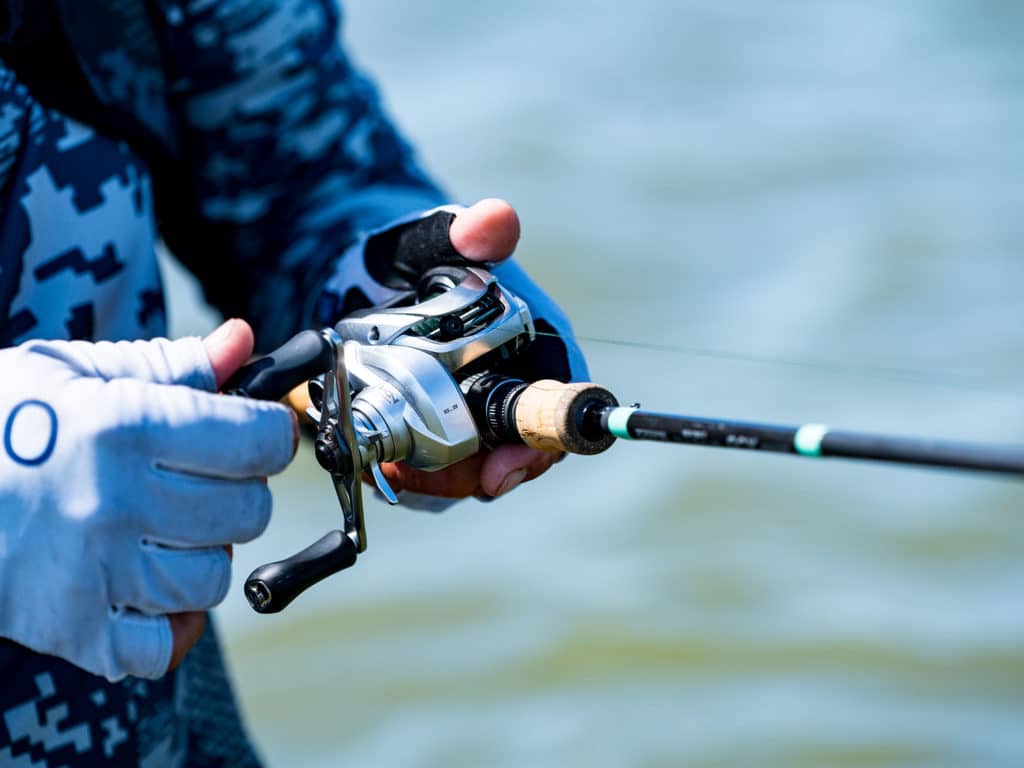
Florentino remembers the early days of saltwater baitcasting reels. “I started out using a Shimano Bantam for calico bass,” he says. Even though the Bantam is designed for freshwater, the sturdy little reel became popular for delivering quick, accurate casts. He laughs when he recalls, “We were using 30-pound monofilament, so the reel didn’t have much line capacity.”
Modern baitcasting reels have increased line capacity by reducing the size of internal components. With a larger spool and precision parts, baitcasting reels are ready for big game.
“Today’s baitcasting reels are a great piece of technology,” Captain Florentino celebrates. He points to Micro Module gearing which uses fine-tooth gears for improved smoothness and sensitivity. “I can choose a gear ratio to meet my needs,” he says. A faster reel is better for topwater lures while a slower reel is best for finesse fishing.
Recently, Shimano took its Tranx technology to inshore fishing. The new Tranx 150 is an instant hit with wade-fishing anglers.
Captain Brian Barrera of South Texas Saltwater Experience has high expectations for an inshore baitcasting reel. “I need a baitcasting reel for both long casts and close quarters fishing,” he says.
Wade-fishing anglers put their gear to the test. Anglers standing waist deep in saltwater require a precision reel for long casts that can withstand the rigors of salt, mud, sand and fish slime.
Barrera also prefers a baitcasting reel to pitch baits into potholes and under boat docks.
“The baitcasting reel has a faster retrieve and is quicker to make a cast,” he says. This is also helpful when he spots a fish and needs to make a quick-draw cast. “For fish that decide they want to start the party when they show up right next to me.”
“Baitcasting reels allow me to make cast after cast and fish for a long time without tiring out,” Barrera starts. Comfort is one of his top requirements. “The reel should fit in the palm of my hand,” he says.
Fishing in close contact with saltwater requires an extra level of corrosion protection. In addition to corrosion resistant materials, the Tranx 150 uses Core Protect coating to repel water. The water just beads up and rolls off.
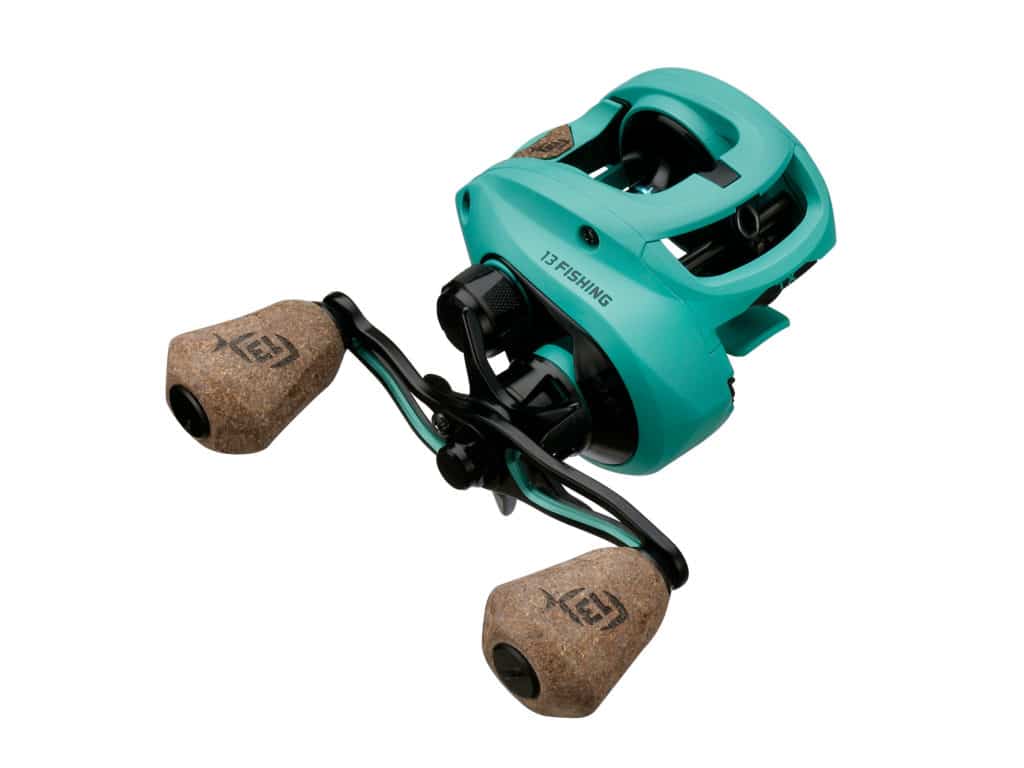
Another new reel inspired by Gulf Coast wade fisherman is 13 Fishing’s Concept TX2. But reel designer Matt Baldwin says an inshore baitcasting reel is great for fishing mangrove lines, docks, points and shorelines anywhere. “A competent angler will make more accurate casts with a baitcasting reel,” Baldwin says.
Baldwin’s explanation is scientific. “When I cast, the delivery of line is a straight shot off the reel and through the line guides,” he says. The smooth and efficient delivery provides a longer more accurate cast.
The challenge is making a baitcasting reel tough enough for saltwater. Baldwin tackled the problem with a full carbon fiber body and treated ball bearings. “The reel is 100-percent corrosion resistant,” he says.
Hard-anodized and precision-cut gears combine with the advanced polymer drag system to put out 20 pounds of drag in a 200-size reel. It’s not about stopping power, but smoothness through the drag range. A larger, stronger drag reduces temperature to produce consistent pressure at lower drag settings.
One reason for the trend in improved baitcasting reels for saltwater is elementary. “Anglers are getting better at fishing,” Marc Mills, marketing manager at Daiwa points out. According to Mills, the surge in fishing’s popularity has led to more anglers pushing their skills.
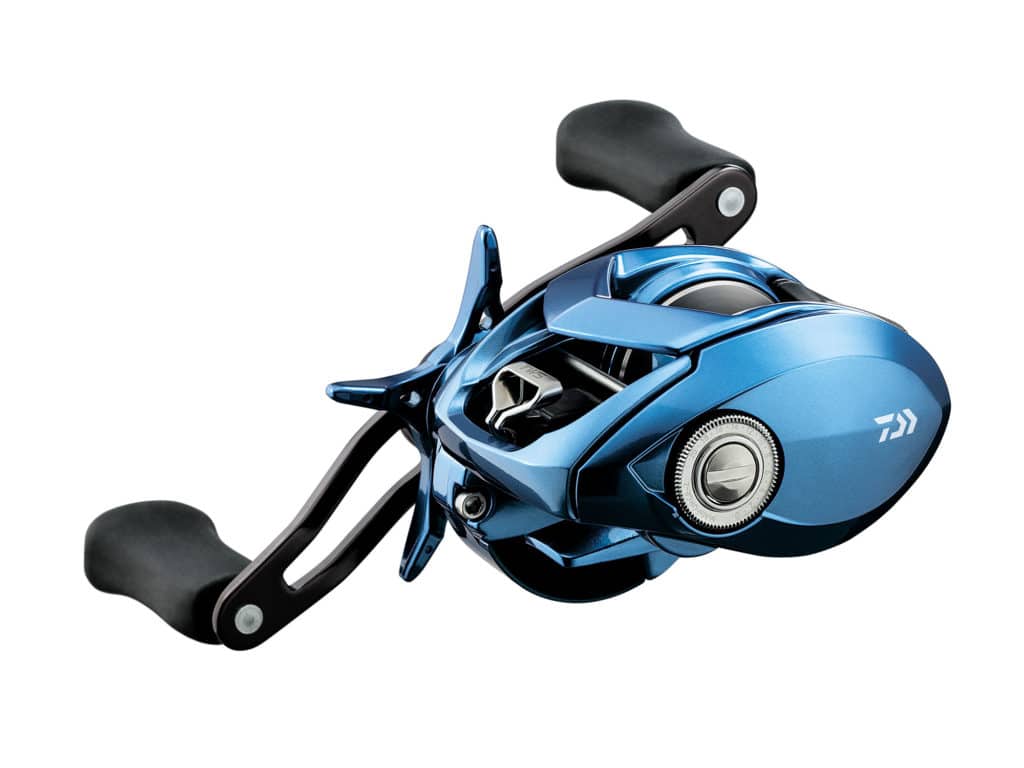
For Mills, the key to a saltwater baitcasting reel is the casting brake. “I need to make a long cast, into the wind, with a light lure without a backlash,” he says. As an example, Mills highlights Daiwa’s Coastal 150 sv. “The reel uses a combination of centrifugal and magnetic brakes to control the spool’s speed.”
Another casting aid included on the new Coastal 80 reel is a bushing instead of ball bearings. “Ball bearings offer too much risk of corrosion,” Mills says. On the other hand, the bushing is made of corrosion resistant nylon. For example, the Coastal 80 uses a nylon bushing between the main shaft and the side plate without losing any performance.
Line capacity is another issue. Mills says the Coastal 200 has a deep spool to cast ½ to 2. ½-ounce lures to calico bass with line capacity to hold onto a surprise yellowtail or white sea bass.
That includes a sturdy, smooth drag system, the Coastal reels use stacked, grease-impregnated carbon fiber to produce heavy drag in a small reel. “We advertise 15 pounds of drag, but the 200 will get 20 pounds all day long,” Mills adds.
My own experiences with low-profile baitcasting reels started in skinny water with light tackle and moved to open water and heavy gear for big red drum, cobia and striped bass.
Read Next: Benefits of a Baitcaster Reel in Saltwater
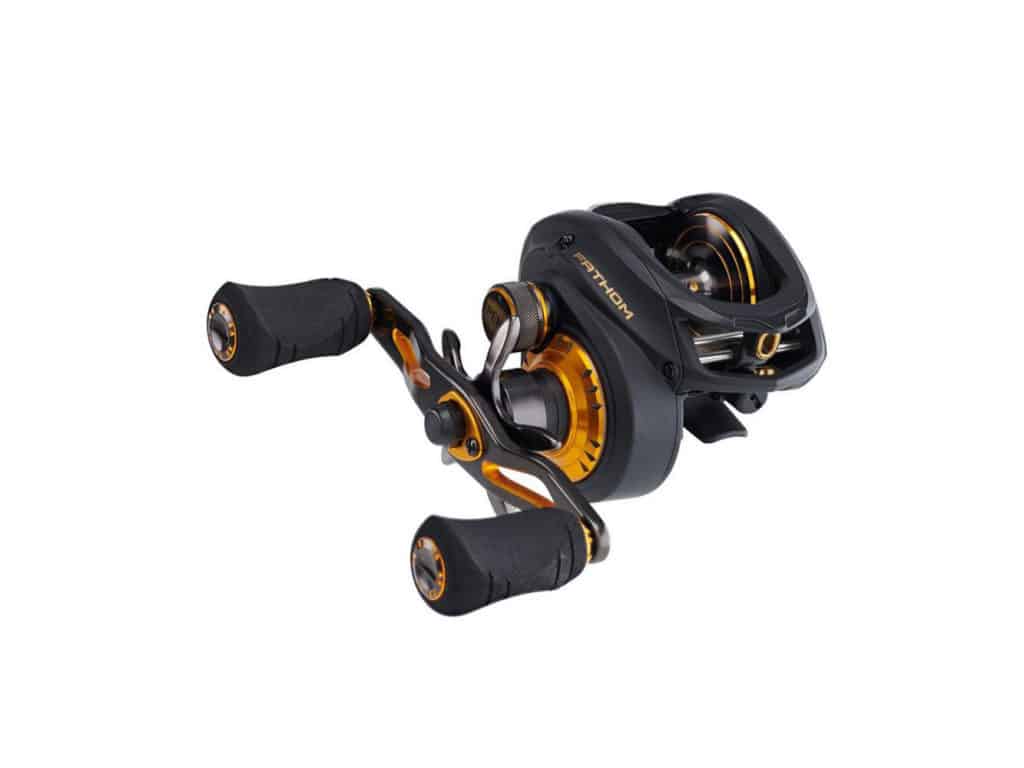
Looking for a reel with lightning fast reaction time for sight fishing, I paired the PENN Fathom 300 with a seven-foot, medium-heavy St. Croix Premier rod.
The reel holds 165 yards of 50-pound braided line and I can still palm it in one hand while applying pressure to a big fish.
The reel uses carbon fiber drag washers to produce 24 pounds of drag. The full-metal body and ball-bearing supported pinion gear to prevent the body from twisting under pressure. The reel sits low on the rod, with a large handle providing more leverage for fighting a big fish.
When I’m jigging big drum in the kayak, the compact reel is more comfortable to hold for hours. Another advantage for kayak anglers, the baitcasting reel lies flat on the deck, ready for quick action.
To cast bucktails to marauding cobia, the baitcasting reel offers lightning fast reaction time. Just depress the line release with my thumb and launch a cast.
If I don’t make a perfect cast, I can slow the line with my thumb to adjust the lure’s trajectory mid air.
For a larger low-profile reel, the Fathom 300 has a two-stage casting brake I adjust with a dial on the sideplate. Turn up the brake to cast heavier lures, then loosen the system when I need to lob a live eel, I get maximum distance without messing with a backlash.
As saltwater baitcasting reels get better and easier to use, more anglers will find more ways to fish with them. Reels have responded with lighter, stronger and smaller reels capable of surviving the harsh conditions and ruthless predators that hunt in saltwater.

